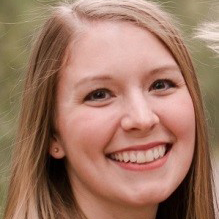Episode 55
Turning Data Into Action
Hallie Tucker
Brought to you by your hosts:

L&D Specialist

L&D Specialist
Description
This week on The BizLibrary Podcast, we welcome Hallie Tucker. Hallie is a safety supervisor and training program manager at Superior Energy Services, and she’s developed a great program using data-driven approaches.
We talked to Hallie about how she uses data to build a stronger training program. She starts with a framework that most learning and development specialists are familiar with: the Kirkpatrick model.
The Kirkpatrick model is a framework that can be used to measure learning – it starts with measuring satisfaction – a simple question can measure this: did the learner enjoy the training?
Next, the Kirkpatrick asks us to understand whether or not the learner actually learned from the training – we can do this by measuring how learners performed on assessments.
Next, we want to identify whether an employee actually changed their behavior – this is the goal of our training, so identifying whether this happened is important.
Finally, we need to look at the outcome – if our training is properly aligned to business goals, then we should know whether we achieved a goal.
For instance, if our goal is to increase phone calls made by a sales rep, we can measure it by comparing the number of calls made before and after training.
This framework is ideal for measuring training because we have a full picture of the learner’s journey.
Hallie began with this framework as a way to bring statistics into her program. With leadership bought in, Hallie began looking for data to apply to her training.
One of the best, and easiest ways to collect data is to simply survey employees. Hallie reminds us to look for nonverbal cues when we collect data, but that simply having conversations with employees and managers about what skills are important for success is a great way to get started.
Thanks for listening to this week’s episode of The BizLibrary Podcast! When you’re finished listening, be sure to download the related resource!
